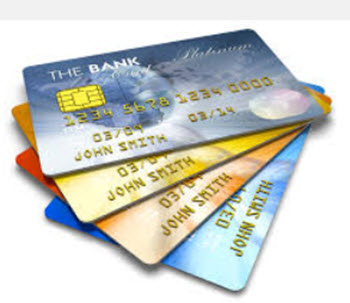Credit is extended by a creditor (lender) to a debtor (borrower). Credit doesn’t have to involve money – when you lend someone a resource and they promise to give it back at a later date, this is also a form av credit extended by you to the borrower.
In our modern world, consumers tend to have many different types of credit. A person may for instance have student loans, a home mortgage loan, a general credit card such as VISA or MasterCard, and a special credit card from a specific chain store. It is also becoming more common with payday loans, which are small fast and easy loans to get. Many stores that sell consumer goods will offer instalment loans, where you pay a small down-payment on the day of purchase and then gradually pay down the debt (and pay the interest!) with monthly instalments. Auto loans where the vehicle serves as collateral for the loan are very popular and doesn’t always require a down-payment. Some lenders will even give you a cash-back when you sign up for the loan.
Revolving-credit
 Revolving credit is a type of credit where you don’t have a fixed number of payments to do. You are approved for a line of credit (e.g. $1,000) and can then use it as you please. The credit card is one example of revolving credit.
Revolving credit is a type of credit where you don’t have a fixed number of payments to do. You are approved for a line of credit (e.g. $1,000) and can then use it as you please. The credit card is one example of revolving credit.
Revolving credit will typically have a minimum amount that must be paid each month, based on how much you owe the creditor. Often, the minimum amount will just be comprised of interest on the amount owed. You can therefore elect to not pay down the principal. This makes the revolving credit different from the instalment loan, where you have a fixed repayment schedule to stick to and each payment consists of both interest and amortization (paying down the amount owed).
Of course, if you don’t pay down the principal on your revolving credit, you will be forced to keep paying interest each month.
Using up all the available credit on revolving credit is referred to as “maxing out”. Generally speaking, the lender will see this as a warning sign of you being in financial trouble. In most cases, it is difficult to be approved for a higher limit on a revolving credit if you have already maxed it out at the current limit.
Secured loan vs. unsecured loan
A secured loan is secured by collateral.
Example: You go to the pawnshop with a golden ring. Since gold is a very valuable investment grade commodity that can be sold at any time directly to a gold broker, the pawnshop lets you borrow $250 with the golden ring as collateral. You leave the ring with the pawnshop. If you don’t return in time to pay back the loan and the interest, the pawnshop will sell the golden ring to reimburse themselves.
 A very common type of secured loan is the mortgage loan, where real estate is used as collateral for a loan. These loans tend to be large and paid off gradually over many years. Unlike the pawnshop situation described above, you don’t leave the real estate to the lender, but if you don’t repay the mortgage loan according to schedule, the lender has the right to take possession of the real estate and sell it to reimburse themselves. Another example of a secured loan where you don’t leave the collateral with the lender is the type of auto-loan where the vehicle is collateral.
A very common type of secured loan is the mortgage loan, where real estate is used as collateral for a loan. These loans tend to be large and paid off gradually over many years. Unlike the pawnshop situation described above, you don’t leave the real estate to the lender, but if you don’t repay the mortgage loan according to schedule, the lender has the right to take possession of the real estate and sell it to reimburse themselves. Another example of a secured loan where you don’t leave the collateral with the lender is the type of auto-loan where the vehicle is collateral.
An unsecured loan is a loan with no collateral. This is also known as a Blanco loan. The lender has sufficient trust in you to believe that you will repay the loan, with interest. If you don’t repay, the lender can still go after your assets to force you to repay, but it will be considerably more complicated than for a loan where a specific asset is collateral. Also, the lender will have no better right to your assets than any other creditor that you owe money to.
Since an unsecured loan is seen as riskier than a secured loan, the unsecured loan will typically come with a higher interest rate and/or a quicker repayment schedule. Your creditworthiness will also be more important. Finding someone willing to approve a very large unsecured consumer loan tends to be difficult – if you need to borrow $250,000 to buy a house you will probably have to go for a secured loan in the form av a mortgage loan.
